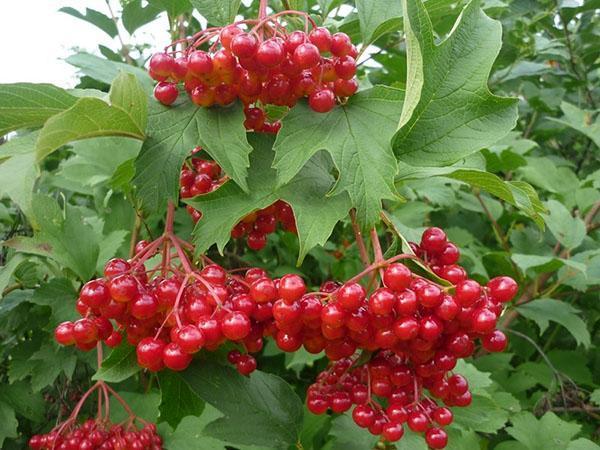Sweet viburnum varieties: everything from planting to leaving
 This amazing plant in the Slavic peoples is considered a symbol of family happiness, goodness and beauty. Therefore, sweet varieties of viburnum must be in the garden of every summer resident. Its gorgeous June bloom and carved foliage is a wonderful decorative element in modern landscape design.
This amazing plant in the Slavic peoples is considered a symbol of family happiness, goodness and beauty. Therefore, sweet varieties of viburnum must be in the garden of every summer resident. Its gorgeous June bloom and carved foliage is a wonderful decorative element in modern landscape design.
The berries of the plant are rich in iron, ascorbic acid, pectin and other useful substances. It is recommended for people suffering from hypertension.
Sweet viburnum varieties give a bountiful harvest
To make the culture feel great, it is planted in a sunny part of the garden or in a light partial shade. Several bushes are arranged in one row or in the shape of a triangle, since viburnum is a cross-pollinated variety. Among other things, the plant prefers:
- soil with a large amount of humus (sod or sod-podzolic);
- well-moistened soil;
- deep bedding of the root system up to 50 cm (the width of the fossa is 60 cm).
The planting hole is filled with manure, superphosphate (1 glass) and ash. All components are dug up and filled with water. When it drains, put the seedling inside, and then drop it in. At the end, the garden is again abundantly irrigated. Among the popular varieties of culture, the sweetest varieties of viburnum are distinguished:
- Zholobovskaya;
- "Taiga rubies";
- "Souzga".
All of them are characterized by increased frost resistance, and are also resistant to pests. Moreover, these specimens give more abundant yields than others.
Delicious jelly, jams and preserves are prepared from berries. Since fruits contain a lot of preservatives and sugar, they can be kept fresh for a long time.
Leaving without further ado
It includes watering, which is carried out as the earth dries up. At the same time, weeds are removed around the bush, and the soil is regularly loosened. Complex mineral fertilizers are applied from time to time. The plant needs pruning because it can grow up to 2.5 m in height. This procedure will add decorative viburnum, as well as create comfortable conditions for picking berries. In addition, sanitary pruning is carried out from May to September. Remove branches and shoots that:
- dry out;
- broken;
- aged;
- trailing on the ground;
- take root.
Like other plants, it is not immune to pests. She is often affected by aphids and viburnum leaf beetle. Insects turn leaves into delicate masterpieces at the very beginning of spring. Therefore, biologists recommend treating the bushes with insecticides up to 2-3 times during the entire growing season.
As you can see, modern sweet varieties of viburnum do not require too much attention. Standard and timely care will provide the owners with a rich, and most importantly, healthy harvest.